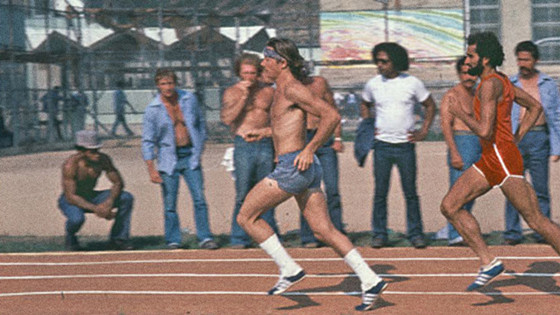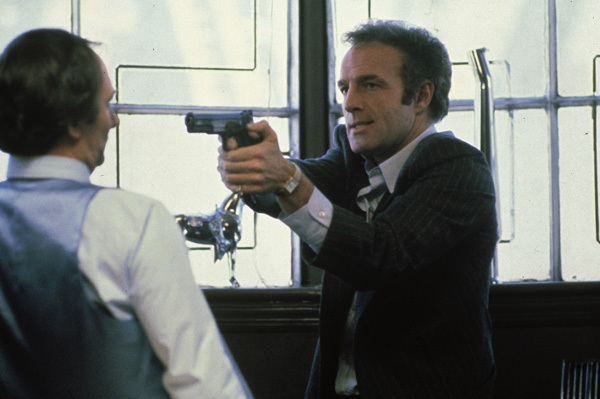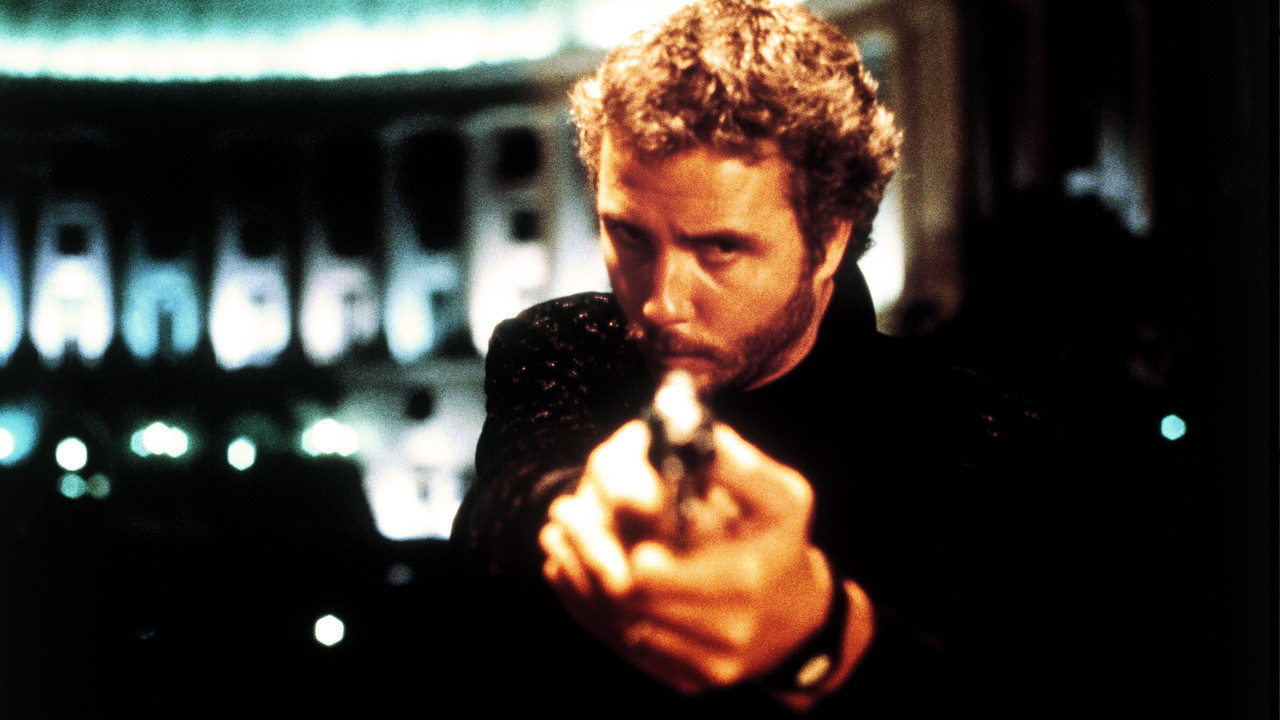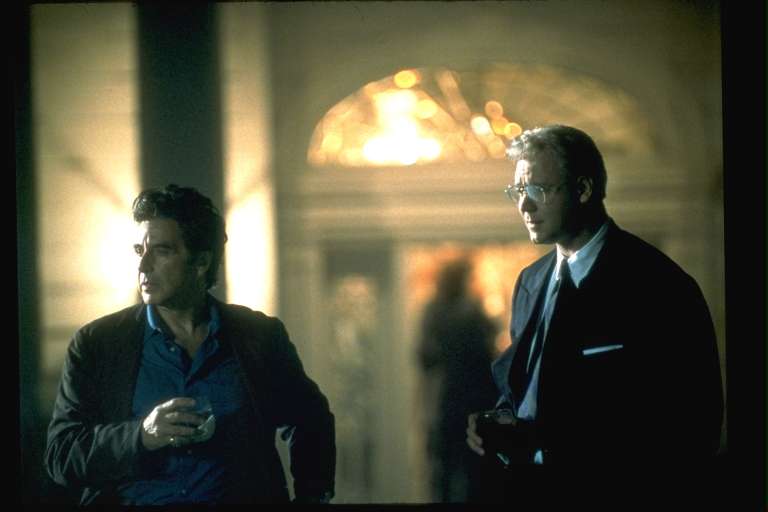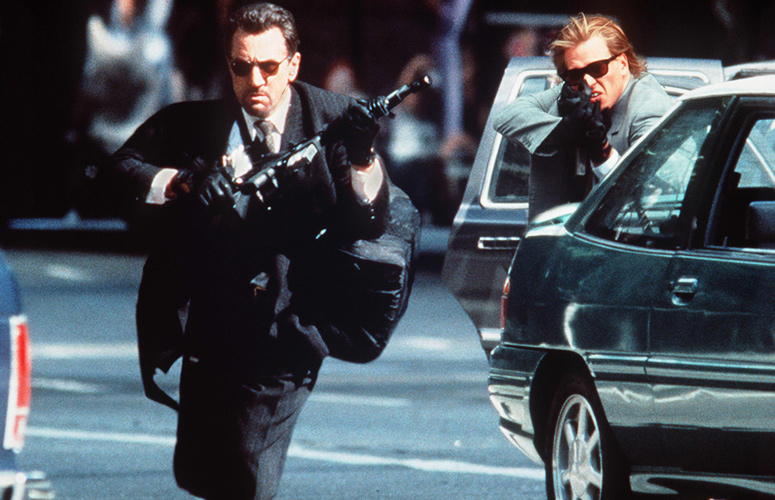5. The Jericho Mile (1979)
While not strictly a feature film as it is in fact a TV movie, this is still one of Mann’s finest works and most likely his most emotional to date. With this in mind is one that should not be omitted from the list.
Based on the story by Patrick J. Nolan, Mann adapted the story into a script that features Peter Strauss as Larry ‘Rain’ Murphy, a man imprisoned for life who spends most of his solemn existence in prison running. His speed and attitude attain the attention of the prisoners and guards alike, and after some unfortunate events, decides to attempt an Olympic trial, as his peers believe him to be good enough.
Strauss is awe inspiring as Rain, his speed and tenacity is captured by Mann beautifully in the running sequences as he could really a run four-minute mile. As such is Mann’s perpetual want for realism, the film was shoot in Folsom prison, with many of the cast being actual guards and inmates. From start to finish it is a very powerful film with a climax that does not disappoint. It is also the first of Mann’s scripts to feature his use of the theme that “there is no circumstance that a man cannot handle” when it comes to his main character and their attitude to life.
4. Thief (1981)
Following on from The Jericho Mile, Mann was presented the opportunity to direct multiple films, however he turned them all down to write and direct Thief. It stars James Caan in one of his coolest performances with a great supporting cast, most of which making their films debuts, the likes of such actors as Dennis Farina and Robert Prosky, who were both early into their fifties and Farina was originally an advisor on the film as a former police officer.
Caan plays Frank, a cool headed, safe cracking thief who dreams of getting out of his current vocation. In an attempt to expedite this dream he enters into a seemingly lucrative heist with Prosky’s subtly sinister gang boss, Leo. When things start to fall apart, he then takes it upon himself to fix his situation as he knows how.
Mann’s first feature film used Tangerine Dream for the soundtrack and combined with his early established mise en scene provides a real sense of danger and urgency with particular colour and shadowing throughout.
Keeping in line with the demand for authenticity, Mann took many steps to ensure the validity of his scenes and the performances of the actors in them were unquestionable. He purchased a real safe for $10,000 for Caan to break into and under the supervision of real life thief, John Santucci with real burglary tools. Advisors for both sides of the law were brought on in what both Caan and Mann claim to be one of their favourite films to ever have worked on respectively.
3. Manhunter (1986)
The first of Thomas Harris Hannibal Lector novels was not first brought to screen with Anthony Hopkins and The Silence of the Lambs, but in fact by Michael Mann and his adaptation of the first novel, Red Dragon.
William Peterson is Will Graham, a retired FBI profiler whose last case nearly killed him in pursuit of the cannibalistic killer, Lector. When a new killer, nicknamed the Toothfairy (because of the marks he leaves on his victims) begins a rampage, his former boss played by the understated Dennis Farina brings him back in to the fold to try and solve the case. Peterson’s performance is strong however it is the supporting cast that provide the backbone of the film with Tom Noonan playing the fear inciting Francis Dollarhyde and Brian Cox as Lector.
Both Peterson and Noonan respectively did their research for the characters as did man for the narrative, however Noonan decided to go against his and chose to stay in isolation throughout the entirety of the production and did so in character. This is clearly visible as it transcends on to screen combined with Mann’s use of colour and framework to show the characters and how they differ in each environment. Another of Mann’s modestly received films that was perhaps unappreciated at the time has now become a cult and critical favourite.
2. The Insider (1999)
Based on a true story and inspired by an article Mann read in Vanity Fair, the film follows Al Pacino as Lowell Bergman, a producer of the American CBS news program “60 Minutes”. Russell Crowe plays Jeffrey Wigand, a former biologist for a well-known tobacco company whom Bergman wishes to expose about their promotion of smoking despite the harm it causes. Initially Wigand is reluctant but after a threat from the company he decides to go on the record.
Mann actually knew the real Bergman in real life and before making this film the two discussed making a film together based on Bergman’s investigations. Pacino was always Mann’s prime choice, as he wanted to see him play a role that he has never done before. As usual the research and background was carried out with Pacino and Mann, immersing themselves into the production. It is the performance of Crowe as whistle blower Wigand that gives the film not only it’s moral compass, but centre. Lisa Gerrard’s perfectly pitched voice combined with Pieter Bourke’s score gives the film added gravitas.
Viewed as a commercial flop due the its $90 million budget not being met by taking only two thirds of it, it was critically lauded being nominated for multiple Academy Awards and liked by many critics and contemporary filmgoers. It is a film that is camouflaged by its seemingly laborious detail but is a tale and journey that is worth viewing.
1. Heat (1995)
Widely considered by many to be his finest work, Heat is a labour of love for Mann. It is in fact a remake of his previous work L.A Takedown. Featuring powerhouse performances from Al Pacino and Robert De Niro as the film’s duelling leaders. Pacino plays Vincent Hanna, the head of the robbery and homicide division for the Los Angeles police and De Niro is Neal McCauley, the leader and brains of an expert team of thieves. What ensues is the chess like events that will mean the end of one or both of their careers.
Never before on screen together, Heat captures exceptional performances from both characters, with Pacino’s tunnel-vision detective going after De Niro’s monk like criminal. Throughout the film Mann captures moments of beauty though his personal love of Los Angeles with its lighting, ocean and skyline views. His trademark use of blue shades on the film are truly breath taking and give sway to the sombre element of the film and mood of characters, until and after the now famous bank heist that has since been used a reference guide by actual police training and films such as The Town and The Dark Knight used as inspiration.
With a strong supporting cast, score by Elliott Goldenthal and supporting music from Moby all under the helm of Mann, the film does not let up and nearly twenty years later still holds fast to the test of time. An absolute must watch from the list if you had to pick one.
Author Bio: Ian is a journalism student going into 3rd year at Cardiff. He also writes for the Film & Tech sections of The Global Panorama.
